[characteristics of mimosa] introduction to the function and appearance of mimosa
The plant shape of mimosa is scattered, the feather leaves are slender and beautiful, its leaves close immediately when touched by external forces, and the flowers of mimosa are shaped like cashmere balls. It bears pods after flowering, and the fruit is oblate and round, which is of great appreciation value. Next, everyone and the editor together to understand the characteristics of mimosa and the role of mimosa and the appreciation of the pictures.
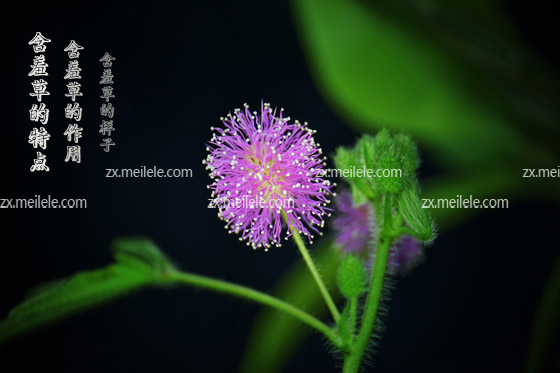
Introduction to the appearance of mimosa
Mimosa is a loose, sub-shrubby herb, its plant height can be up to 1 meter. The stem is cylindrical, with branches, with scattered, recurved hooks and anatropous spines. The stipules of mimosa are lanceolate, 5-10 mm long, with steel trade and bristles. When an external force touches the pinna and lobule, it closes and droops. The pinnae are usually 2 pairs, fingerlike arranged at the top of the total petiole, 3-8 cm long. The leaflets of mimosa have 10-20 pairs, linear-oblong, 8-13 mm long and 1.5-2.5 mm wide, apex acute, margin setose.
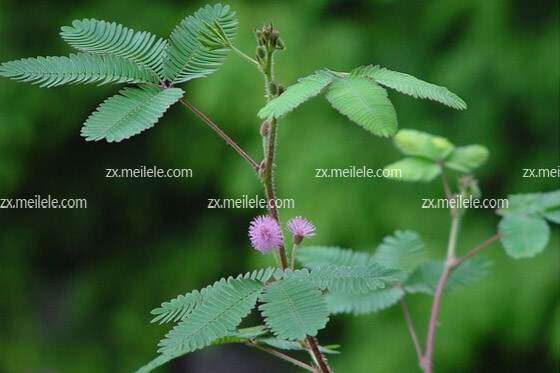
The head of mimosa is spherical, directly about one centimeter, with a long total pedicel, solitary or 2-3 in the axillary species of mimosa, the flower of mimosa is relatively small, the color is light red, most. Bracts linear, calyx very small, Corolla campanulate, lobes 4, outside pubescent, stamens inside flowers 4, protruding beyond Corolla, ovary shortly stipitate, glabrous; ovules 3-4, style filiform, stigma small. When the mimosa bears pods after flowering, the pods are oblong, about 1-2 cm long, flat and slightly curved. Its flowering period is from March to October and its fruiting period is from May to November.
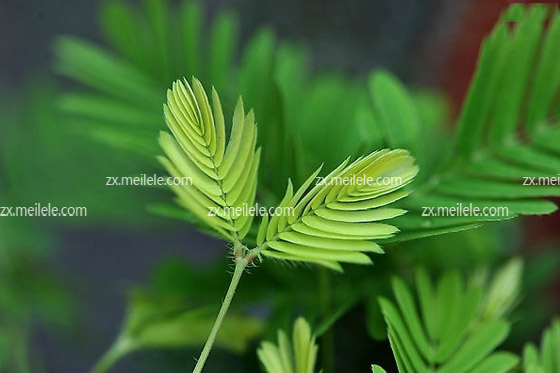
The characteristics of mimosa
Mimosa jade is different from other plants, because when touched by the outside world, the petiole is drooping and the small leaves are closed. This is the characteristic that makes it known as mimosa. The mimosa is supported by the tiny reticular protein actin. When it is closed, the phosphate of the actin will fall off. If the mimosa absorbs the compound that does not let the phosphate fall off, it will not change when touched. Actin is generally found only in animals, while in plants, mimosa contains this substance. When the leaves of mimosa are touched, they will close immediately. The more powerful they are, the faster they close, the whole leaves will hang down, as if they are weak, and the whole action will be completed in a few seconds. Because the leaves and petioles of mimosa have a special structure. This structure is very sensitive to stimuli.
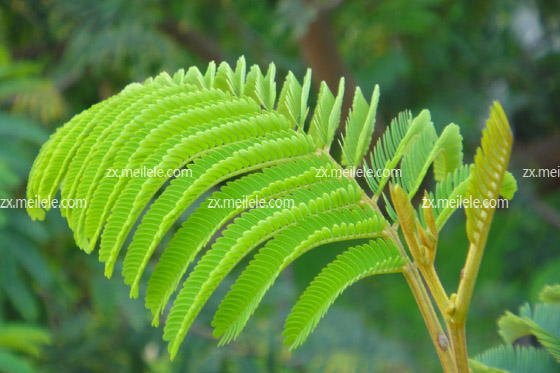
The function of mimosa
The whole plant of mimosa can be used as medicine. its plant tastes sweet, astringent and cool, and has the effect of calming the mind, clearing away heat and detoxification. it can be used for vomiting and diarrhea, insomnia, infantile accumulation, eye red swelling, deep abscess, banded vesicle and other symptoms. The root of mimosa is astringent and slightly bitter. The roots are toxic. However, it plays a certain role in relieving cough and resolving phlegm, promoting dampness and dredging collaterals, and stomach, eliminating accumulation and so on. It can be used for cough, phlegm and asthma, rheumatic arthralgia and indigestion in children.
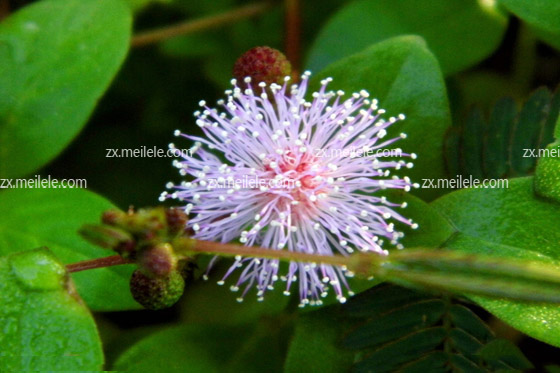
Because the mimosa leaves close and droop when touched by an external force, it predicts the effect of the weather. When touching with your hands, if the leaves close quickly and open slowly, it means the weather will clear up. If the leaves contract slowly, sag slowly, or even close and reopen when touching mimosa, it means that the weather will change from sunny to overcast or it is going to rain.

Conclusion: the above is the characteristics of mimosa brought by the editor, the role of mimosa and the introduction of the appearance of mimosa. After reading the introduction of Xiaobian, I believe we all understand it. Mimosa is a perennial herb or subshrub of Leguminosae. When touched by people, it has drooping petioles and closed leaves, so it is named mimosa.
Conclusion: the above is the characteristics of mimosa brought by the editor, the role of mimosa and the introduction of the appearance of mimosa. After reading the introduction of Xiaobian, I believe we all understand it. Mimosa is a perennial herb or subshrub of Leguminosae. When touched by people, it has drooping petioles and closed leaves, so it is named mimosa.
Related
- Wuhan Hospital Iron Tree Blooming Result Was Instantly Frightened by the Gardener Master
- Which variety of camellia is the most fragrant and best? Which one do you like best?
- What is the small blue coat, the breeding methods and matters needing attention of the succulent plant
- Dormancy time and maintenance management of succulent plants during dormancy
- Minas succulent how to raise, Minas succulent plant pictures
- What are the varieties of winter succulent plants
- How to raise succulent plants in twelve rolls? let's take a look at some experience of breeding twelve rolls.
- Attention should be paid to water control for succulent plants during dormant period (winter and summer)
- Watering experience of twelve rolls of succulent plants
- Techniques for fertilizing succulent plants. An article will let you know how to fertilize succulent plants.



